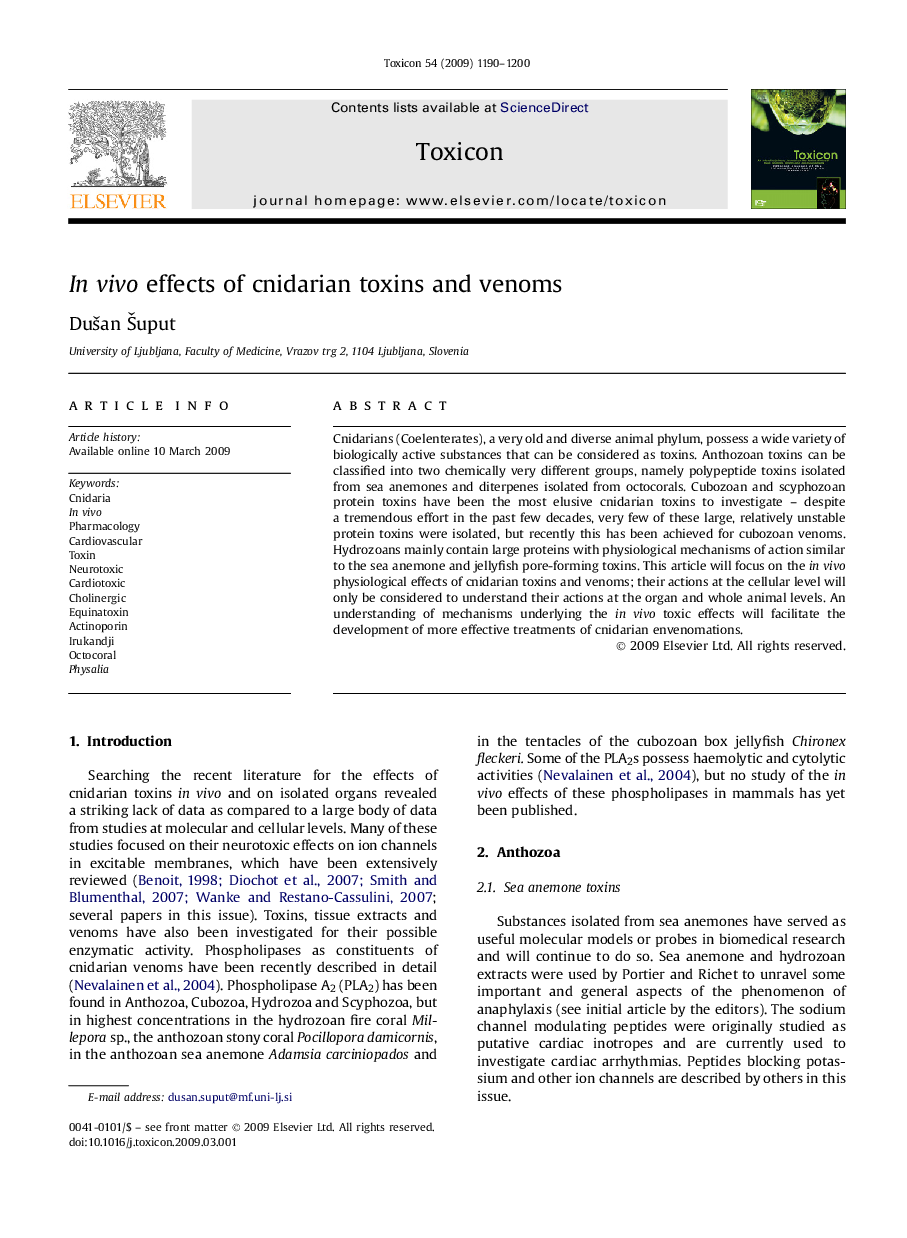| کد مقاله | کد نشریه | سال انتشار | مقاله انگلیسی | نسخه تمام متن |
|---|---|---|---|---|
| 2065117 | 1076905 | 2009 | 11 صفحه PDF | دانلود رایگان |

Cnidarians (Coelenterates), a very old and diverse animal phylum, possess a wide variety of biologically active substances that can be considered as toxins. Anthozoan toxins can be classified into two chemically very different groups, namely polypeptide toxins isolated from sea anemones and diterpenes isolated from octocorals. Cubozoan and scyphozoan protein toxins have been the most elusive cnidarian toxins to investigate – despite a tremendous effort in the past few decades, very few of these large, relatively unstable protein toxins were isolated, but recently this has been achieved for cubozoan venoms. Hydrozoans mainly contain large proteins with physiological mechanisms of action similar to the sea anemone and jellyfish pore-forming toxins. This article will focus on the in vivo physiological effects of cnidarian toxins and venoms; their actions at the cellular level will only be considered to understand their actions at the organ and whole animal levels. An understanding of mechanisms underlying the in vivo toxic effects will facilitate the development of more effective treatments of cnidarian envenomations.
Journal: Toxicon - Volume 54, Issue 8, 15 December 2009, Pages 1190–1200